– Welcome, everyone, to Wednesday Nite @ the Lab, I’m Tom Zinnen. I work here at the UW-Madison Biotechnology Center. I also work for UW-Extension Cooperative Extension, and on behalf of those folks and our other co-organizers, Wisconsin Public Television, Wisconsin Public Radio, the Wisconsin Alumni Association, and the UW-Madison Science Alliance, thanks again for coming to Wednesday Nite @ the Lab. We do this every Thursday night.
– Wednesday night.
– I’ve never done that before. We do that every Wednesday night, 50 times a year. [laughter] Tonight it’s my pleasure to introduce to you Barry Hartup. He’s with the Department of Surgical Sciences here in the School of Veterinary Medicine, and he’s also with the International Crane Foundation. He was born in Iowa City in the great state of… Iowa. And he went to high school in Roseville, Minnesota, and then he came to the University of Wisconsin-Madison to get an undergraduate degree in zoology. And he got his master’s degree in the Nelson Institute, and then he got his Doctor of Veterinary Medicine here at UW-Madison. After a few years of practice, he went to Cornell to get a PhD, and then, in the year 2000, he started in at the Crane Foundation up near Baraboo. Tonight he’s going to talk with us about the health of cranes, avian medicine, and conservation. Please join me in welcoming Barry Hartup to Wednesday Nite @ the Lab. [applause]
– Thank you. Thank you very much. It’s a pleasure to be here speaking to you all tonight. The story, I guess, that I’m sort of weaving in throughout this presentation is one that took about 35 years or so to manifest. It sort of tells the journey of how the School of Veterinary Medicine and some of its staff have helped the world of avian conservation by sort of practicing veterinary medicine sort of outside the usual bounds and considering a species, working with a species, that not everybody gets to work with very often.
And what’s very interesting about my situation right now with this sort of dual appointment, yes, I have standing here at the university, but I’m also the Director of Conservation Medicine at the International Crane Foundation, and I was thinking today, one of these days I’m going to have to get a custom-made hat that has both logos, and whenever I need the logo of choice, I can spin it forward. This really is sort of a collaboration between the university and one of our favorite non-governmental, nonprofit organizations in south central Wisconsin, the International Crane Foundation. And what I do is essentially I am the doc for a unique sort of living museum of the world’s 15 species of cranes in Baraboo. ICF is an organization that has been in existence since 1973. They’re the only organization that I’m aware of in the world that exhibits all 15 of the species of cranes that are extant currently. What has always made this place so unique is the fact that it is so mission-driven on one taxa. And the reason is, is because cranes are one of the most endangered families of birds in the world. Of the 15, 11 are threatened or endangered with extinction. And so since its founding, ICF has always had, made use of resources in the wildlife health or avian health world.
Here at the university, actually a precursor, I guess, or one consultant was, do any of you know Bernie Wentworth? Formally of the Department of Poultry Science? Bernie was an avian physiologist and a big helper to ICF in its early days. As well as the USGS National Wildlife Health Research Center, or the Health Center, which is on the south side of the Beltline, has been involved with ICF for some time. But, really, sort of the clinical approach or the application of veterinary medicine to the health of cranes really began with the veterinary school’s founding in 1983. So we are at that 35-year mark. And, actually, in the upper left of this picture is someone who I met in the summer of 1986 when I was doing my internship with the ICF after my zoology degree. It was a veterinarian by the name of Paul Howard. And he was one of the original clinical faculty at the school. And he was helping this kind of wacko project with sandhill cranes being done up at the Necedah National Wildlife Refuge northwest of here where they were rearing these sandhill cranes with people wearing costumes so that the cranes didn’t imprint on the people. And using that as a first run as an approach to take captured reared animals and successfully reintroduce them in the wild.
So here he is doing a health check on the birds. And then, throughout the 1990s, one of the veterinary school’s first exotic animal faculty, Dr. Julie Langenberg, was also the consulting veterinarian for the Crane Foundation. And she was my mentor in veterinary school when I was a student there. And so, lo and behold, I come back in 2000 and take her position as Julie moves on to being our state’s first wildlife veterinarian. Lucky for her, she got chronic wasting disease to deal with. And I didn’t have to deal with that. So I sort of went off in my cool yellow phase there and have been with ICF since. But what we’ve really done to sort of move our program and our training forward is now we have multiple post-graduate trainees doing their residencies in zoological medicine in collaboration with the university and the Milwaukee County Zoo. And that’s Dr. Jen Hausmann, who’s a new staff member at the Denver Zoo.
She finished last year. So ever since my position with ICF, we have had a much more formal tie. So I remember back when I was an intern at ICF I met people like Dick Dubielzig. I met contemporary staff members of his at the school. But that was always just a fee for service type of arrangement. We’ve got an issue. We’re going to bring birds down for special care, but now we are sort of a preferred cooperative institution working with UW veterinary care for the betterment of the cranes. And then all of the programs that we can contribute to, really worldwide. Of course, the base work that we do is the core work. Job number one is what I do as a zoological veterinarian.
There is a captive flock of about 120 cranes up at the ICF in Baraboo. And we use the sort of best practices to make sure that we feed them a good diet. We keep them free of parasites. We use vaccinations and annual health exams in this very comprehensive sort of preventive medicine program. And we take great pride in setting a variety of records it seems almost every other year with being able to improve the longevity of a lot of the specimens that live at ICF. In fact, our oldest crane at ICF right now, he and I share a birthdate. I’ll let you guess how old I am. [laughter] But this is– And this, of course, is a great way to get our residents and then also veterinary students really involved with our programs because a lot of them are looking for sort of alternative experiences to add to their classic veterinary education. But we’ve also, I work in really sort of implementing a big biosecurity program at ICF as well. This is a map showing the 2017 outbreaks of highly pathogenic avian influenza throughout the world.
And it’s been a very interesting process to have to deal with two emerging diseases since I started at ICF. One was West Nile virus– what kind of threat would that pose to cranes potentially? And now, what about avian influenza? And so we have established very tight biosecurity programs to make sure that our birds stay healthy and that we don’t get into a situation like this. This was one of those poultry houses up in Lake Mills that had to go through a massive sort of reboot to their biosecurity to get them back into operation. So a lot of my work is spent in preventing issues rather than necessarily dealing with a lot of drama with sick cranes. I mean, how many of 120 birds can be sick at any one time? Hopefully not very many. So it’s really, that has been our bread and butter in terms of our veterinarian work. But we do have a full-service clinic that I run with a veterinary technician up at ICF, and we can take care of small things, like this female crane named Bjorn who broke a toe last summer and needed to have a small procedure done on that. Fortunately, again, we could get resident trainees as well as someone, an instructor from anesthesia to come up and help us with this procedure, and everything has gone great. But a lot of the times we also run into some very, very unusual situations that, okay, we need this stronger medicine approach and sort of activate that sort of preferred client status with the school.
And this is going to revolve around not the cute little chick, whose name is Curry, but this is Chanda Nez, the female Indian sarus crane. Indian sarus cranes are the tallest flying bird in the world. Her mate actually is the old man who looks me in the eye. But she was really off this last year, and cranes will sometimes do really stupid things, like they love bright, shiny objects and they like to pick at them and they like to nibble and swallow them. Well, lo and behold, she wasn’t doing very well, very non-specific signs, like lethargy and wasn’t reacting to stimuli and her keepers, and finally we got around– she had a high white blood cell count– and we went around and finally took a radiograph, took an X-ray to see what might be wrong, and, believe it or not, this bird had found sort of a failing piece of wall board in her pen and picked at it to the point and pulled out the nails, quite surgically, and swallowed them. And we think, I think there’s seven of them in there. Now, look at their distribution. Those are not in the bird’s gizzard. They’re not in the intestinal tract.
We were like, where are they and what kind of a danger does this present to her long-term health? Well, we really can only gain that kind of information by doing a little bit better of a construct through other types of advanced imaging. So we went ahead and brought her down and subjected her to a CT scan. And you can actually see those with these bright, shiny fields right here and here and I think this one right here. These are the stones inside her gizzard. I’m just going to go through several of these, and if you look at where these points are, what we have is basically a series of pictures that show us that those foreign objects are, thankfully, not in any vital structure. In particular, we’re worried that one was near her oviduct, so when she goes to lay an egg that that would be a particular problem. In fact, once we sort of nursed her through this bout of ill health, she successfully laid an egg last year. And we just sort of said, look, to cut to cure is not in her future because trying to remove these objects would cause far greater damage. And so like shrapnel in the body, perhaps it’s just best to leave it alone.
So we have a bird who’s walking around out there with seven nails in her belly, and it’s just kind of an amazing feat. We deal with a lot of, because I’ve said we sort of set longevity records in a lot of species, we deal with a lot of chronic disease and a lot of arthritis. And so this is a picture of Bubba. I think Bubba was about 42 years of age when this picture was taken, and he has some pretty nasty arthritis in his tarsal joint which is analogous to our ankle. But having been through a knee injury, I can really empathize with this bird. And you basically take the same approach by using some external support, this hinged brace, to help him through this period of time after he had sort of reinjured this joint and gets better. I also sort of like this picture because it’s one time where it’s a decent picture of me and I feel like I’m giving the bird a helping hand. [laughter] Literally. But he went on to be with us for several more years after that.
As I said, sometimes these birds can do rather stupid things, but they also, it’s amazing, you know, when you’re working with a species like the whooping crane that got to a low of 15 birds and has a very relatively limited genetic diversity, you can’t believe the accidents that befall these animals. And back in, I think it was 2005, we had a young chick who was just literally about to be released, like within two or three days. And a heavy iron ring that was supporting the netting that was on top of the pen, that the bird was in somehow let loose, fell on the bird, and broke its wing. And so what happened is that bird was brought down to Madison to actually have a very large orthopedic implant put in on its humorous bone to help it to heal. But, of course, the bird healing is, you know, bone healing is very similar to mammals. We would expect this to be healed in four to six weeks. It’s not going to coincide with being able to migrate. So that bird was allowed back into his social group, which will help his demeanor and his behavior management as that bird heals. But if you want to go visit this bird, you can see Torch at the Milwaukee County Zoo and their whooping crane exhibit.
He did just fine but he was sort of remanded to captivity because we don’t have a way to bring isolation-reared birds into captivity and re-release them. A very large part of what I do is focused on what we call reintroduction medicine. So we have sort of what I call the zoological practice for the captive flock and the birds that are productive, that are meeting population management goals, whether for captivity or for released in the wild with regards to whooping cranes. But then I have a very large slice that is focused on the medical management, the health management of the chicks that we are actually putting out to speed the recovery of the endangered whooping crane. I mentioned that old study that was done in the mid-1980s to work out a technique to prevent improper imprinting by cranes on people. And so you can see the handler of this young whooping crane chick is wearing a costume to hide the human form beneath it because we do need to manage the health of these birds as they grow, pretty intensely, because they have a lot of problems. And so we have a well– just like you would have a well child visit with your doctor for many years, for the first two months of life we have the same kind of schedule for these very fast-growing chicks. They get to adult size within about two to three months. And so a lot is going on there and a lot can go wrong very quickly.
And one very kind of interesting issue we had to deal with this last year was a sudden change in the timing of the work that we do to rear these birds. Normally ICF is called upon amongst all of the institutions in North America that participate in crane rearing for introduction, there are three of them, one in Calgary and one outside of DC. We were asked, instead of, to rear chicks, instead of in June, in May. Well, if you know anything about the weather in Wisconsin in May, it’s exceedingly variable and much different than a typical June. And what happened is we had a rash, by July, we had a rash of rib fractures, broken ribs in our group of chicks. In fact, we had seven birds with one or more broken ribs. Bird ribs are very, are normally quite strong structures, very rigid. But in a growing chick, they’re fairly flexible. And because of how we handled the birds, we sort of nestled them in our hands and hold their legs so they don’t scratch themselves, they can get a little top heavy.
Maybe that puts a little bit of pressure on the chest, but we didn’t think it was a handling issue. And what happened is that, due to that early rearing, we think that they may have had some problems with bone strength. One because of vitamin D, lowered vitamin D levels. We compared the 2017 chicks to a very good year that we had blood samples archived in our freezers and showed that this past year’s chicks had slightly lower vitamin D levels at one month of age but that those corrected quite nicely by two to three months of age. And then also the thyroid that helps regulate calcium in the bloodstream. The parathyroid hormone was elevated. In other words, the body is sort of crying out for a little bit more calcium into the system. And then we took a very deep look at the birds’ diet that they were given in those first couple weeks. For a number of reasons, we had to use a diet that was slightly different than the zoo diet that we normally would use.
Yes, it’s Agrimaster poultry feed from Blain’s Farm & Fleet. [laughter] And it didn’t meet, lo and behold, junky food didn’t meet what they said on the label. For its calcium phosphorus ratio, which should have been more like about 1.6, when we tested it, it was very low. It was about 1.1. And the problem is that’s not particularly good for bone health and growth and development. You can see the crane diet that we normally have the birds on is at 1.45. And the reason we didn’t have them on that diet we had to go with is because we can’t get this crumbled to a size that the chicks can handle. It comes in a little cylinder that they can begin eating at about two weeks of age. So we needed to give them a diet, a little crumbly diet that they could ingest, but it was a little bit off.
So we had this perfect storm of– And then here’s my cue to say, well, the weather was pretty lousy in May. So the lousy weather, these chicks that can’t thermal regulate very well have to be kept inside. Well, because our chick rearing is normally done later in the year, we don’t make special arrangements or accommodations to incorporate UV lighting into our indoor housing. And we think those chicks were somewhat deficient in their exposure to UV light because we could only get them outside for short periods of time. And there’s a sort of perfect storm of, okay, not making very much vitamin D, not getting a very well-balanced calcium and phosphorus ratio, my diet, my vitamin D that I’m taking in isn’t quite adequate, and thus we had a form of what’s called metabolic bone disease but fortunately almost a subclinical or very mild form. The happy part of this story is that we got these birds through these episodes, and actually, if I’m not mistaken, all seven of those birds were ultimately released. Healed up and did fine. So that’s kind of an unusual episode in our big commitment to helping ICF meet its goals in terms of helping the whooping crane recovery program and breeding the species. But in my time since I’ve been there, now this isn’t to say that ICF, veterinary support for ICF weren’t involved in our international programs or field work, but we’ve become more so in my time.
We’ve been trying to sort of grow that side of the business. Grow that side of the practice. And so I do a little bit more wildlife health in different places, and I wanted to tell you a little bit about that. It also is not surprising perhaps that it is focused on North America. It’s kind of been our backyard as an extension of the work that we do with the captive whooping cranes. And that is working with the wild population of the whooping crane. So here we have this reintroduced population that we started here with in Wisconsin in 2001. But that is an extra experimental population. Really what you need, what I’d like you to focus on is this population that we refer to as the Aransas Wood Buffalo population.
This is the remnant wild migratory population that survived this genetic bottleneck in 1940 when there were only 15 of the entire species remaining. They were all in this population, and they’re the population from which the captive flocks of ICF and sister organizations and all these reintroduced birds have sprung from. In fact, we think there were only about four to six matrilineal lines that actually survived the bottleneck. But the population winters at Aransas National Wildlife Refuge, an hour north of Corpus Christi. We’ll talk maybe a little bit later about Hurricane Harvey and what it may or may not have done to that refuge. But this species breeds, this wasn’t known until the early 1950s, actually, where these birds went to, to breed in summer. And these were found by, I believe, foresters or firefighting outfits in Canada. And this was within the bounds of Wood Buffalo National Park, which straddles the boundary between Alberta and Northwest Territories at the 60th parallel. It’s about a 2500-mile migration.
And this population has really recovered remarkably. Their current number stands. I think Tom used a number in one of his advertisements pieces, the entire species numbers, I want to say, somewhere between 650 and maybe 700 birds. But I want you to focus on that remnant wild population has gone from 15 in 1940 to between 350 and 400 birds today, as best we know. It’s a pretty remarkable recovery. It’s gone through a fairly robust, about 4% a year, growth rate. They’re beautiful birds to see on the landscape. It’s North America’s tallest flying bird. Impressive wingspan.
These birds stand about five-and-a-half feet tall but remarkably don’t weigh a whole lot. They’re about five to six kilograms, maybe 12 to 14 pounds. And our work has really focused on a willingness by the Canadian Wildlife Service and the US Fish and Wildlife Service to now dive a little bit deeper into where these birds are on the landscape, what type of habitats do they use, and learn more sort of fine scale spatial information about their migration routes and their local use of breeding and wintering habitat. So beginning in 2009 we had our first phase of marking of this species for the first time in probably about 20 years. And we focused on these remnant sort of concentrations of the population in a couple of different watersheds in the north part of Wood Buffalo National Park. So this black line is the north central sort of border of Wood Buffalo National Park. Here’s the NWT/Alberta border. Fort Smith, Northwest Territories, is located about right there, where my pointer is. And that’s where we fly out from.
And so what we’re making use of are helicopter surveys and nesting surveys that the Canadian Wildlife Service does every May to understand what the number and distribution is of the whooping crane nesting effort. They count how many birds are sitting still on a nest, and it’s pretty easy to see a white dot on a very non-white landscape. And then we know if we come back to that site in two months, about 40% to 50% of the time we might find a chick with those parents. But that territory has to be reached by air and, especially if we’re going to get on the ground, by helicopter because it’s essentially an inaccessible wilderness. And so we stage out of Fort Smith, the small airport there, fly over the great Slave River, and get to the whooping crane nesting grounds, and that’s probably the best shot I can give you from this last year, which is just this amazing sort of boreal forest wetland system with these large networks of ponds with only just small ridges of dry land between these wet areas. And this is essentially what we’re looking for. We’re looking for a pair of adult cranes with one or more brown juveniles. And these juveniles, at this age, actually can’t quite fly. They’re probably about two months of age.
So they’re just growing their primary feathers, and they’ll fledge probably in about two to three weeks after this. This is right around August 1st. If we actually find a family group with twins, we take a pass on them. But in order to do the marking, what we wanted to do is to get singles. So single, we call the chicks colts. So if we found a family group with one colt, then we would go in and we would mark that bird and put a satellite telemetry tag on them. And then one of the reasons I was there was, well, one, just to play the role of a veterinarian in case there was some form of an accident. We believed in our technique. We were following the procedures that the Canadian Wildlife Service used in the late ’80s to do a very small project by similar means.
But the hope was that we could add a little bit of science value to what we were getting out of that, to learn a little bit more about this species in the wild, and to do this both in Canada and in Texas. So I thought with this next video you’d see exactly how this happens and how you actually get into this. I didn’t think I would have to be training, doing all this physical training in my advanced years for this kind of work, but it sure has been a lot of fun. [interior helicopter hum] So this is shortly after we left Fort Smith Airport over the Slave River. We spotted a family group. [helicopter sound] And now it becomes a race against time. [helicopter sound] The woman in front of me is Valerie from the Calgary Zoo. She’s wearing a pink hat. – He’s in the trees, right there.
– What we’re doing is we’re keying in on the helicopter. There you see what looks like a fly in the upper part of the video there. The helicopter positions itself back behind the family group and gives us something to site in on because we’re not going to see the birds on the ground. And their natural inclination is once the parents see us, the parents will alarm call and flush, and then the baby will hunker down and just hide under the trees or any available vegetation. And so we have 12 minutes because we don’t– There’s no real pursuit in this capture. We want to get our hands on, but we don’t want to disturb them for any longer than we have to, so we have 12 minutes to get to the chick. And then once we have our hands on the chick, our goal is about 15 to 20 minutes of working time to get our jobs done. So here we’re weighing the animal. We’ve given it a health check.
– All right, bird. – We’ve attached a telemetry device, which I’ll show you, and then we release the chick back into the wetland. And I’ve now been through 78 of these events. And in every case we have very, very high degree of confidence that they have reunited with their parents. The parents don’t go very far. They’re not right next to us by any means, but they don’t go far and they reunite very fast. And so, again, our job is to take biological samples from these birds, take measurements. I’m actually doing a study looking at these birds’ stress responses, acute stress response. So we try to take our blood sample very quickly after we lay hands on them, and then we take a second sample 12 minutes later to look at how the incline of that stress response may vary depending on various conditions.
And we will compare that to values we get from adults at a later point. If there’s a minor injury, again you’ve got a veterinarian embedded in your field team to help take care of that. We attach, now we’re using actually a newer generation of telemetry tag. This is what’s called a GSM tag, or it’s basically a cellular device. So as soon as this bird reaches a cellphone tower at the right moment, it will actually get a ping. It will make contact and dump all of its spatial data into our network, basically, via cellphone. And so you can imagine if we’re doing this with several animals, you’re going to get both individual histories but then you’ll get this snapshot of the population in much more detail. So this is the actual history of that chick that we just looked at and their migration this past fall. In fact, if you look at the, if you could track the dates there, you’d actually see the bird was only flying for not even a week to make that entire 2500-mile distance.
They, typically in fall, will stage in central Saskatchewan and feed in agricultural fields. So they spent a month in Saskatchewan before they pushed on south. And this is the range of stopover sites that were used by birds that we marked with these devices between 2009 and 2014. And the interesting thing here, I think, is that the vast, vast majority of these sites that these birds stop at during their migration are on private land. And there are real conservation challenges on those private lands. We think that we’ve got enough protected public lands and landscapes that are good for cranes available to them, but it turns out that they use quite a bit more habitat than we ever imagined previously. And that’s the kind of thing that was pulled together by the USGS, Fish and Wildlife Service, and Canadian Wildlife Service through this study. But as I said, we did try to add additional biological value by doing a number of other studies of the cranes themselves and looking at their parasite communities, looking at some of their clinical pathology, their blood protein measures, some behavioral measures and things like that. Things that might help us as, if nothing else, baseline data so if this species gets into trouble in the future, we’ve got a reference point that we can come back to.
But now we’re into the second phase of this project, and that’s what I wanted to sort of finish up with on the whooping crane side of things quickly. And that is because Canadian Wildlife Service and Fish and Wildlife Service are becoming increasingly concerned about oil and gas development throughout this bird’s migration range, and wintering range in particular. Wood Buffalo National Park is pretty unlikely to be developed in a significant way, but there could be ramifications to the hydrology and contaminants if the oil sands region in northern Alberta goes, expands significantly beyond where it is just south of the park. But we, through that initial telemetry phase, we found out that birds stopped in the oil sands region, the mineable area. And they even overnighted on tailings ponds. And there’s a lot of concern about this. So if you look at the inset map here to the right, this is the mineable area, sort of the designated region within which oil sands mining can occur. Here’s the southern border of Wood Buffalo National Park. The nesting grounds are probably about right here, just off the figure.
So this bird landed in a tailings pond with its family or with its parents overnight. Probably in and of itself not the largest potential for some kind of toxic exposure, but you could imagine some birds, over repeated stopovers, may pick up or be at risk of something that that is. And so this is of concern for them. And then the US Fish and Wildlife Service is also a bit concerned about oil and gas development in and around the National Wildlife Refuge in Texas. The Aransas National Wildlife Refuge was formed, actually, such that the United States government owns the surface rights but not the mineral rights. And so if you look at all these red dots right here, this is the mainland portion of the refuge known as the Blackjack Peninsula. There’s all sorts of oil and gas wells all over the peninsula. You see several throughout the bay systems here as well. Also, this is a major shipping channel.
I think here some of you can get a feel that there’s almost a line here and certainly right here. This is the Gulf Intracoastal Waterway. This is as busy as the Mississippi. And this completely bisects the National Wildlife Refuge. So there’s a ton of barge traffic there. So the possibility of a spill is ever present. This is a new oil well that was put in in the last year. Looks relatively benign until you sort of look at this and say, why did they need all of this space for what ultimately is a fairly small installation? Well, this entire pad was full of drilling gear when they first drilled this well. And they were convinced to initiate their drilling operations in the uplands, away from the crane marshes and drill it at an angle.
And so this is what we’re encountering. There are two new facilities like this that are much closer to the crane marshes than anything else previously. So there was motivation to renew this marking study this year. And so just a little over a week ago I got back from the Aransas Refuge where we successfully captured seven birds and put these new transmitters on them. And so I think in the promotional material it said, how do you capture a crane in a salt marsh? Well, here you go. This is kind of the view into the crane’s habitat here with these various marsh plants just up from the bay ecosystem. We’ve got extensive salt flats or sand flats there between these small hummocks of wetland vegetation. We look for crane sign. It’s actually not too hard to tell the difference between– They share some of this habitat with sandhill cranes, and whooping crane footprints look pretty different than sandhills’.
They spread their toes a little bit more. I’ve become an expert at reading poop. [laughter] This is– You can tell the whooping crane scat pretty easily because they feast on Carolina wolf berries when they first reach Texas. And so that’s all those tomato-like seeds getting splattered out in the scat of the bird. So we’ve got footprints, we’ve got scat, that means they’re using that area as kind of a highway. We look for a little bit of raised area where we can hide a game feeder. We attract them in with something they might like if they’re in the area, and that’s corn. Believe you me, wild whooping cranes love to come to feeders just like our small songbirds in your backyard. And so it’s not too hard to get them to come in for a free meal.
But sometimes you have to wait and wait. I’m the third guy on the capture crew, so I get relegated to a quarter mile away and I’m on a radio listening for when we actually go live and we can predict that a bird will be in the area. Sometimes I get to sit in a turkey blind for the better part of eight hours. That’s not real pleasant with a couple of other guys who are six-two and six-four. It gets kind of crowded. We have to brush these in very well and hide them, and then hopefully we get a bird coming into that little hole with a remotely triggered snare trap. And that looks like this. It’s a very safe device that took, actually, years of R&D. And that is, and lots of swearing and lots of trial and error, and we said if it works on us and it doesn’t hurt us, it won’t hurt the cranes.
And, yeah, we actually use them on a filament snare line that is activated with a shock cord that pulls it tight quickly around the bird’s leg. And you send the person out who’s the designated handler. In this place, Dr.– So this is a PhD running after a crane, Dr. Felipe Ramirez. And then you have to really know what to do when the bird turns on you. And so that’s always a bit of a terrifying moment because we all have scars. I got a beautiful kissing wound from a bird this last trip. But I kind of like this picture because this has happened a few times where we catch birds right at sunrise. This is Dr. Brad Strobel. He’s the refuge biologist at Necedah National Wildlife Refuge, holding the bird, and David Brandt, a USGS employee who’s a field biologist and master trapper extraordinaire.
These are beautiful animals. They are tough as nails. They’re not quite like the birds I work with at ICF who are a little bit wimpy. They’ve adapted to captivity. Some of them are real headaches, but, boy, these birds want to just kill you. [laughter] Well, think about it. They’re in full on fight or flight mode. Right? So we employ the same standard with these animals that we do with those younger chicks. We want to keep the stress on these animals as brief as possible and let them go on their way. Again, we’ve sort of averaged about 15 minutes’ worth, 15 to 20 minutes’ worth of work. And you can see we’ve attached the telemetry device to the leg of that bird.
And this is the kind of data that we get. So this is the bird that Brad was holding two slides ago. She was captured I think right here. And she got the hell out of there, and this was her first flight down here. She went across the Intracoastal Waterway, kind of hung out, recouped, and then came back to her territory and hooked up with her mate and chick. And then, interestingly, within a day that family decided to move. Now, whether that was due to us we’re not exactly sure because we’ve seen other pairs do this. But there used to be a, the dogma was that birds would have, especially pairs, family groups would have very tight fidelity to a winter territory. And that’s what this male is kind of showing you.
You know, they make small forays for various resource and maybe sometimes they’ll pin to the uplands, but they pretty much stick close to their wintering territories. We’re going to learn a lot more from this data because we’re taking a point on these birds every 30 minutes as opposed to every six hours. And so you can make much better inferences about resource use and whatnot. And, again, the whole idea is to gain better knowledge of the use of the habitat of these species so that we can do a better job protecting the landscape while this species recovers. And they’re looking at some big challenges with sea level rise and changes in coastal habitat and coastal development in Texas. So I wanted to end up tonight talking to you a little bit about some of the work that I’ve also been able to do internationally, which has been quite wonderful over the last few years. I used to wonder, actually, in the first five years of my employment with ICF what the I stood for. Because, like, everything I told you happened in Wisconsin or Texas. But, yeah, the International Crane Foundation.
Again, we want, instead of just being a consultant by email, we wanted to support our global programs in more meaningful ways when possible and support the people who are helping us do that work in those places. And that, I think, is what has been most rewarding for me is these are going to be two stories sort of talking about people we worked with. This is Dr. Olivier Nsengimana. Olivier is a veterinarian. Actually, he was sort of discovered, in a sense, by one of my classmates, Dr. Jan Ramer, who worked with the organization Gorilla Doctors, which is now administered by UC Davis. But they provide veterinary services to the mountain gorillas in the Virunga Volcanoes region in Rwanda and Uganda and Congo. And Olivier was a gorilla doctor. But Olivier had an idea about protecting the cranes of his country, and there really is just one species of crane in small Rwanda and that is the grey crowned crane, a species you probably see quite often, either on television or in zoos. And he, won an award from Rolex watches, has a young laureate award, kind of a mini MacArthur genius award.
He got government support to take on the issue of domestic trade in these animals. And it’s very interesting. Everything thinks of wildlife trade and thinks of trafficking, going to the Middle East or to China or nefarious, you know, organizations in Europe or the US. But this was actually, the crown crane is a status symbol in this part of the world. And so wealthy people and hoteliers like to have a crane in their garden to show off. And so birds are sort of poached out of the wild and brought in and are kind of held as domestic pets. They’re treated all right. Actually, some people take great pride in their treatment of their cranes. But they don’t do well. They don’t breed.
Some birds are brutalized to keep them flightless. It’s a pretty depressing situation. And we knew that in East Africa the grey crowned crane population was really plummeting. And, actually, in the time I’ve worked for ICF, since 2000, this species has been listed as endangered on the IUCN red list. And so Olivier wanted to take on this issue of trade in his country and, first and foremost, by working with the government to run a registration program where people who had these birds and they’re holding them privately register them and there’s kind of an amnesty there. They’re not going to be prosecuted. They’re not going to be fined. But those birds are going to be evaluated and possibly re-released in the wild. And that’s where his veterinary side comes in, and his contact with me, is I helped with, sort of helped capacity building and his team of himself and a couple of veterinarians that have worked with him, because what they want to do is his work with gorilla doctors, if nothing else, showed him the value of biosecurity and the whole idea that, you know, humans and animals sometimes can have just devastating sort of consequences on one another in terms of disease transfer.
And so what we did is they would confiscate animals then ultimately from homes and bring them into quarantine in Kigali, in the capital city, placed them in quarantine for 30 to 60 days, health check them, make sure we’re not going to transfer any disease into the wild, and then we would re-release these birds in Akagera National Park in the eastern part of the country. Again to bring the numbers of the cranes up in the country. There’s only five– One number I want you to remember is 500 birds was the estimate for the entire country of Rwanda in the wild. Grey crowned cranes in the wild at the start of this project. And so we worked with his team basically to teach some principles of avian medicine, conservation and such. Here I’m working with Dayo [inaudible], who actually just wrote me today, which was great. Dayo is a wonderful man, great veterinarian, very dedicated to what he’s doing with the cranes, and now actually wants to do a scientific research project and sent me a spreadsheet of data and was like here, I need you to help me with this. And here we’re working on an injured bird actually at Akagera Park, trying to treat an animal with an inflamed foot. But this last February, February 2017, I had the pleasure to run a three-week training workshop for 10 veterinarians and a couple of veterinary students on the principles of avian medicine to help give Olivier and Dayo additional human resources, people who can really help them get their job done to rehabilitate the species in this big project.
We also had Anne Lacy from ICF, in the middle there, come with me for a couple of weeks, and we worked on field techniques that we can use with the cranes. And this is an interesting sort of redeployment of a traditional Indian and Pakistani crane hunting technique, these snare lines. And, in fact, we actually used this same technique with whooping cranes two weeks ago at the Aransas Refuge, where you have a line of snares and the birds sort of walk though it and they get a foot stuck and they’re looking around, they don’t know what’s going on. By then you lay hands on them and restrain them. In this way, we can help treat any birds with problems or if other kinds of interventions need to happen but in a safe way, we can do that because you can’t dart a crane. You got to use other kinds of means. But we basically were helping to teach his team, Olivier’s team, in their safe use. So, in all, Olivier and his team have registered 262 cranes in the capital region alone. Remember the number I gave you before.
We thought there were 500 left in the wild. That’s a huge proportion of the population that has been poached and is in captivity. And Lord knows how many birds were lost, you know, along the way to make that happen. And out of that 262 number, 196 birds have been released in the wild in Akagera. And, again, the idea is to supplement. One, it’s really to make a good thing happen out of a pretty terrible situation. And so this is much less a conservation biology or population recovery program as it is an anti-trade, live bird trade program. But we have an opportunity to potentially supplement the population in this savanna park in the eastern part of Rwanda with these cranes as well, which I think is a great thing, and hopefully reverse a declining trend for this species in central Africa. One last project I want to tell you about quick involves white-naped cranes and kind of a remote relationship that I’ve got with a conservation outfit in Mongolia.
This is the distribution of white-naped cranes. This is a vulnerable species in East Asia with breeding populations in Mongolia and northern China and far eastern Russia. And they winter predominately in two or three places. At Poyang Lake, a large, inland, freshwater lake system, very similar to the Great Lakes almost, in southern China. And then also in the DMZ in the Koreas, as well as at a place called Izumi in Japan. And so this species we know is in a bit of a decline but seems to have a stronghold in eastern Mongolia. And we’ve worked with Dr. Nyamba Batbayar from the Mongolia Wildlife Science and Conservation Center in Ulaanbaatar. We’re trying to turn this raptor biologist into a craniac. He seems to really like cranes a lot, so we’re working on him quite a bit.
We’ve been able to find funding, actually, from the US Forest Service and their international programs to help with rangeland conservation, which is really kind of the biggest issue with regards to wetland conservation and what is a fairly dry ecosystem. And what our small project is doing is trying to make use of some non-invasively acquired samples from the cranes to tell us a little bit about their potential exposures to various contaminants. And so we’re using eggshells from hatchings and feathers that are shed from the adults onto nest platforms like this or that are taken from live chicks because Nyamba and his team are banding the resulting chicks at about two days of age, right around August 1st just like the whooping cranes, and they’re able to pluck a feather or two from those birds harmlessly. And we can test those for a variety of substance, persistent organic pollutants, as well as heavy metals. And so one of the things that we have done is worked with his team to conduct a pilot project where they’re already monitoring this production of this endangered species. Already charting these nesting sites. Now we’re just asking them to collect materials off of this website, or this nesting site, and then get them analyzed just to inform us a little bit on an issue that we have very little information on cranes from, because cranes are hard to grab. As you’ve sort of seen from my work with whooping cranes, it’s really hard to understand what kind of exposure they have on a landscape to things like persistent organics, or heavy metals for that matter. So I always like to end with something cute.
This is a pretty extraordinary find. Now this means that, yeah, that second egg may hatch out in another day or two, but I’m sure they went ahead and took the eggshell off of that nest site for testing. I just wanted to use those few stories as sort of illustrations of this kind of collaborative partnership between the veterinary school, in particular, although this relationship between ICF and the university cuts across many, many departments, actually. But for my world in veterinary medicine, it’s been a really interesting journey to watch, again over about this 35-year period. And we’re really hopeful that these just fantastic individuals, these young veterinarians who we’re working with can continue this tradition into the future. So thank you very much for your time. [applause]
Search University Place Episodes
Related Stories from PBS Wisconsin's Blog

Donate to sign up. Activate and sign in to Passport. It's that easy to help PBS Wisconsin serve your community through media that educates, inspires, and entertains.
Make your membership gift today
Only for new users: Activate Passport using your code or email address
Already a member?
Look up my account
Need some help? Go to FAQ or visit PBS Passport Help
Need help accessing PBS Wisconsin anywhere?

Online Access | Platform & Device Access | Cable or Satellite Access | Over-The-Air Access
Visit Access Guide
Need help accessing PBS Wisconsin anywhere?

Visit Our
Live TV Access Guide
Online AccessPlatform & Device Access
Cable or Satellite Access
Over-The-Air Access
Visit Access Guide
 Passport
Passport


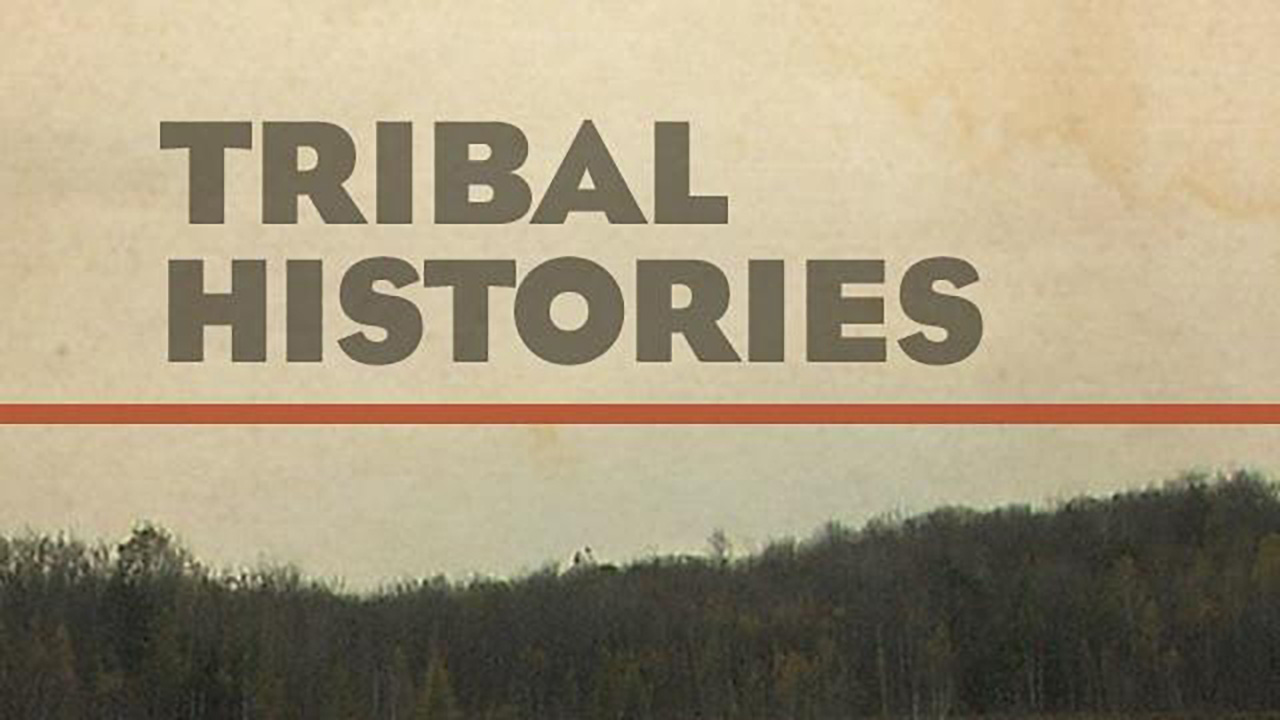
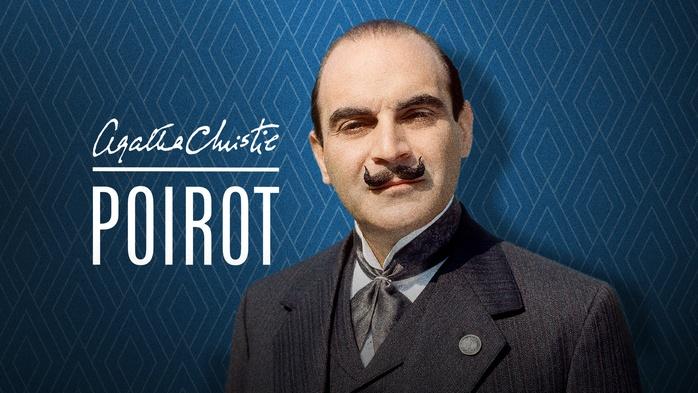



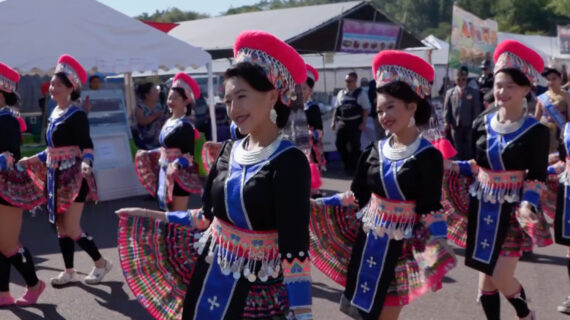
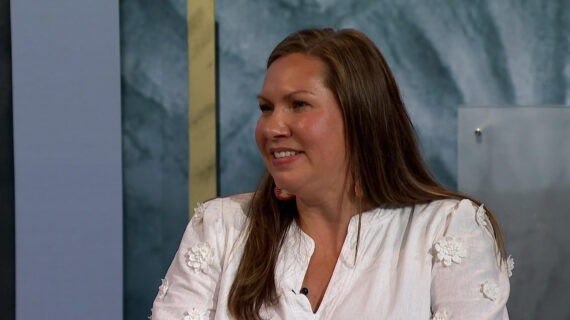
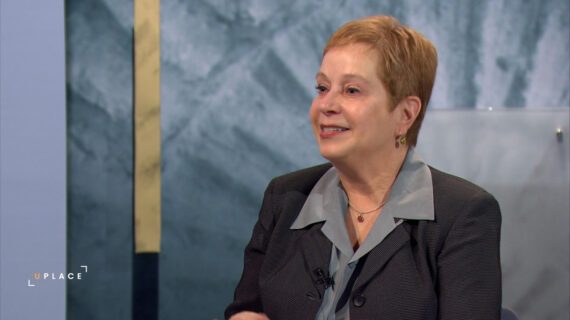
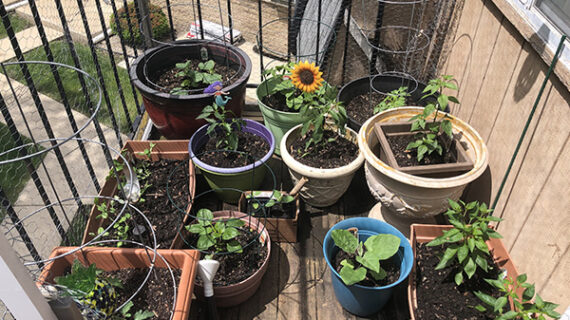
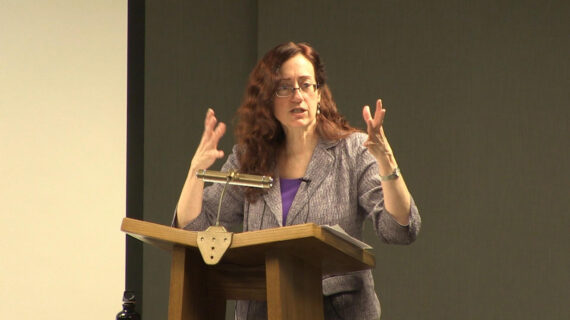
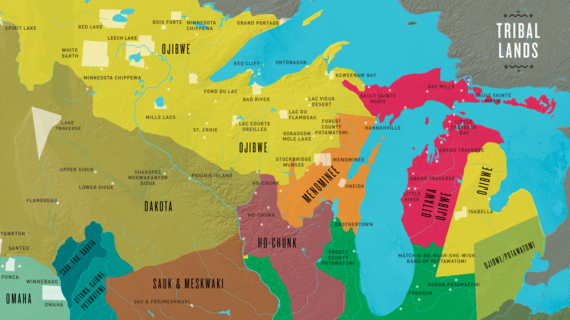
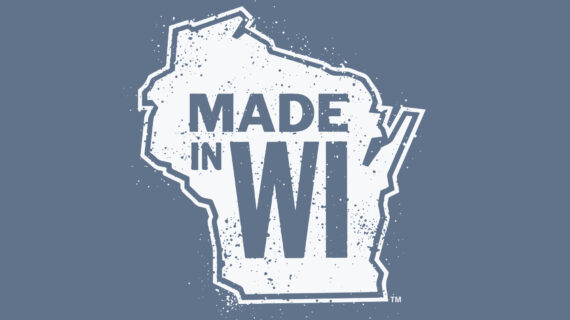
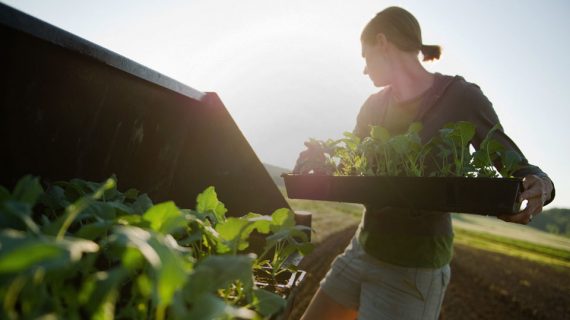
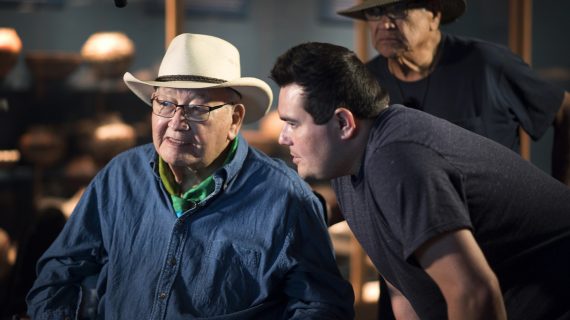


Follow Us